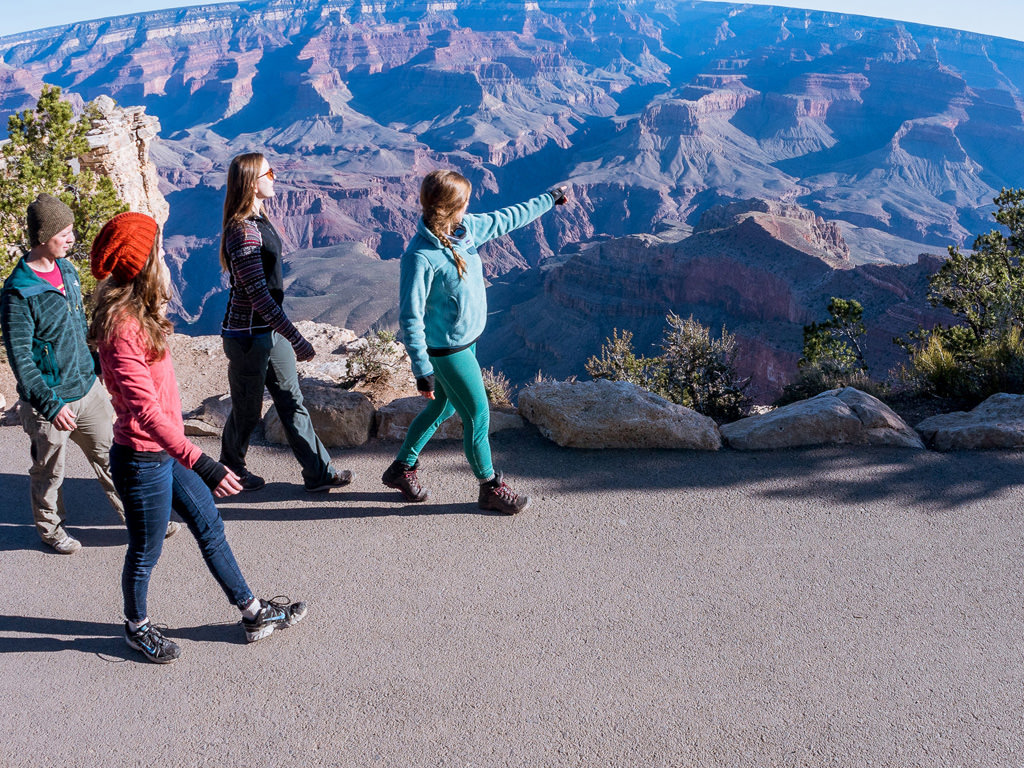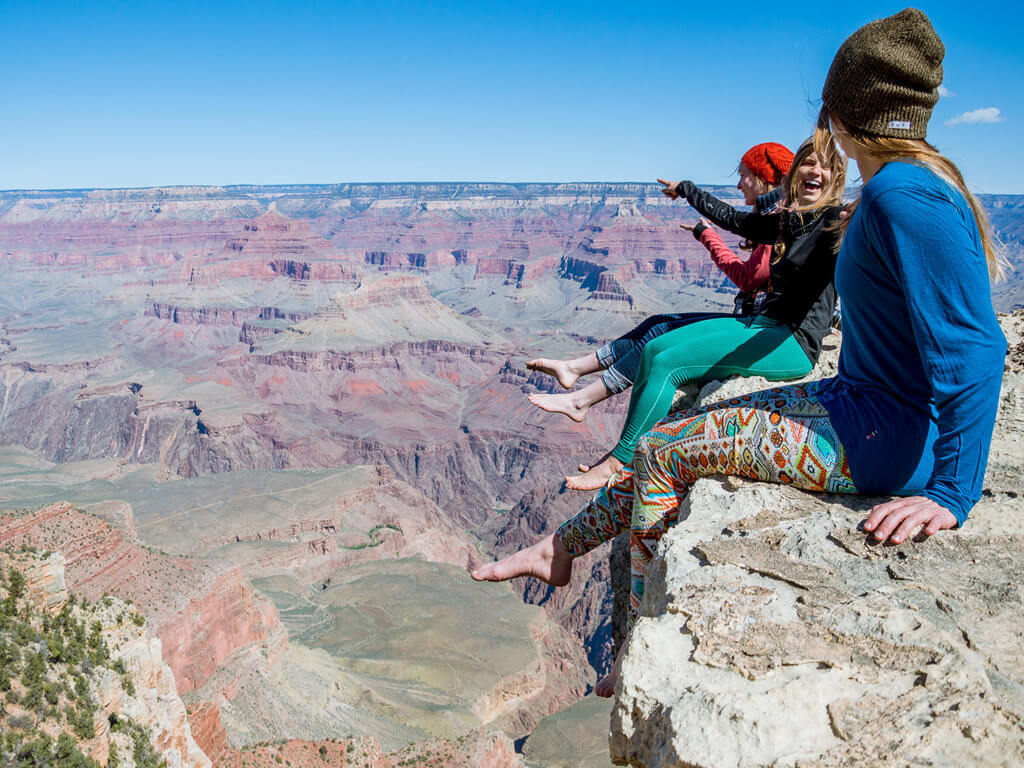Hiking in the Grand Canyon: An Insider’s Guide
Seeing the Grand Canyon is a bucket-list dream for many people, but truly experiencing the overwhelming landscape means more than standing at an overlook on the rim. You must take the next step, leave the pavement, and actually enter the canyon.
Day hiking is the most popular and safest way to do this, though overnight backpacking trips are an exciting endeavor for experienced hikers. The variety of trails and scenery in the national park make day hiking possible for people of all abilities, and some are even ADA accessible.
Hikes Along the Rim


- Jesse Weber
North Rim has the most options for hikes along the rim, granting phenomenal views without the rigorous descent into the canyon. The easiest is the paved Cape Royal Trail, a 0.6-mile round trip with interpretive signs along the way. It packs wide views of the canyon and the Colorado River into its short distance. Point Imperial Trail overlooks Mt. Hayden’s rock spire and the photogenic Nankoweap Mesa area. It is an easy 4-mile round trip, but it is exposed to summer heat and thunderstorms. There are other rim trails in this north half of the park as well. Pick up a free map at the entrance station to find the route right for you.
The Rim Trail is the South Rim’s only option for staying above the drop off. It is partly paved and partly dirt, and connects many iconic overlooks. Because the trail roughly parallels park roads, you can easily customize your hiking distance by hopping on the free shuttle where it stops.
Hikes Below the Rim


- Jesse Weber
Out of the nearly 5 million people who visit Grand Canyon National Park each year, fewer than half venture below the rim. The only way is on foot, which is difficult and can be treacherous. Some pay money to do it by mule, but the free and rewarding route is under your own power.
Numerous trails descend from South Rim into the depths of the canyon. The South Kaibab Trail offers the biggest vistas and is the shortest route to the river. The Bright Angel Trail is a more comfortable option, however, because it’s less steep, shadier, and has water spigots at places, while South Kaibab has no water until the very bottom.
For an especially scenic journey, drive around to the North Rim and take North Kaibab Trail, which pleases with a crisp creek, waterfalls, and rock caves. Though there is drinking water and shade along the way, its length, elevation, and southern exposure make North Kaibab the most difficult of these three, which are known as the “corridor” trails.
All three converge near the confluence of Bright Angel Creek and the Colorado River, a verdant oasis in the bottom of the canyon. Historic Phantom Ranch has cabins and a dining hall (lodging and meals must be reserved in advance), and Bright Angel Campground has many pleasant tent sites.
Other trails in the park are just as spectacular, but they are unmaintained. This makes them more rugged and challenging. To test yourself apart from the crowds, check out Hermit, Grandview, or Tonto trails.
